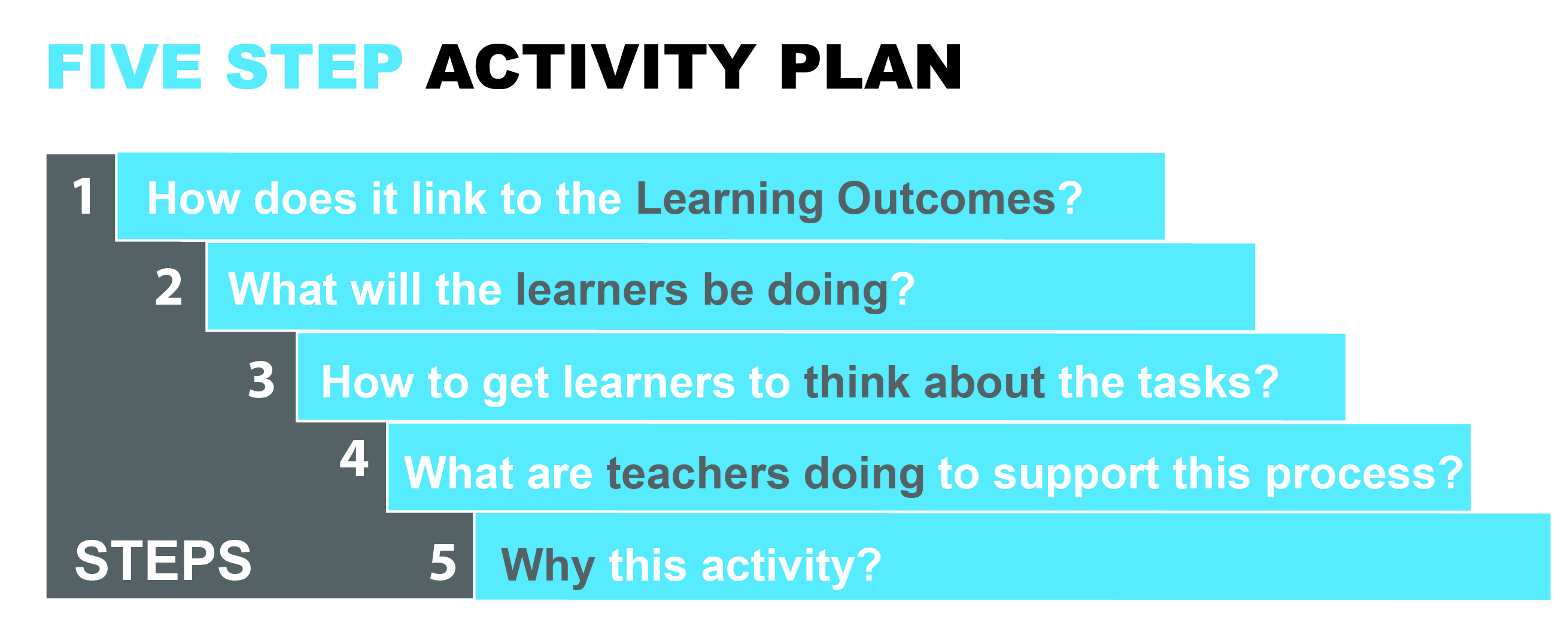
Teaching and research
“All genuine learning is active, not passive. It involves the use of the mind, not just the memory. It is the process of discovery in which the student is the main agent, not the teacher.” (Adler 1987)
When we introduce active learning in the classroom we are creating opportunities for students to actively engage with course content, rather than passively receiving material that is presented to them. By engaging with the content students are connecting their own individual knowledge, beliefs and experiences to the new content, thus strengthening the connections made as they develop new understandings. This results in a deeper understanding of concepts that is longer lasting and more meaningful to the students' future professional life than mere memorisation.
There are three main ways to actively engage students:
- Mentally. This may involve students thinking creatively or critically, reflecting on learning, or applying new concepts. An example is to ask students to spend one minute at the end of the class writing the key concepts they learnt from the class, or completing an exercise applying what they have learnt in class.
- Physically. This may involve students performing tasks and actions such as operating equipment and tools relevant to their discipline, or engaging with models and learning tools in the classroom.
- Socially. This may involve students expressing their ideas, attitudes and values or giving and receiving feedback with their peers. It may be conducted in pairs or as group discussions, or may be online using collaborative tools such as discussion boards or polls to allow students to share their knowledge.
Examples of Active Learning in the classroom
Some examples of activities that can be incorporated into classes include:
- Polls and Surveys – Online polls, such as PollEverywhere or Zoom Polls, can be incorporated as a low stakes activity to get students involved in their learning. They can be used to determine student’s knowledge prior to class, to gather opinions and ideas, or to test understanding at the completion of a lesson
- Think-Pair-Share – This activity involves asking students to think about an idea or question, discuss their thoughts with a partner, then share their findings with the class. This can be used to discuss a course reading, to revise a concept, or to explore different attitudes and opinions.
- Role Play – This activity asks to students to act out a scenario in groups or pairs to allow them to practice skills for the workplace. This may include scenarios such as patient intake interviews, discussing client needs, or practicing job interview skills.
For more ideas on active learning options see Learning Design and Teaching Innovation's resources.
Benefits and Considerations of Active Learning
Academics that have applied active learning in the classroom have stated that there are a number of benefits and drawbacks to be considered when introducing new activities.
Benefits of active learning may include:
- Students have better retention of learning
- Students develop a deeper understanding of content, rather than just memorising
- It can be more engaging and fun
- There is a greater capacity for personalised learning
- Teachers can gauge student understanding of the content
- It can help students to build confidence in a safe space before they join the workplace
Considerations when developing your activities include:
- Some activities can take time and effort to develop. You’ll need to consider what is appropriate giving your constraints, and the potential benefits of the activity. Some activities take minimal effort, such as asking students to talk to the student next to them, while others may be more intensive.
- Some students can resist participating. This can be minimised by starting with low risk activities early in the semester to get students used to participating and building up to more socially risky activities later in the semester. Careful selection of activities that are relevant to student’s assessments or future career activities and discussion of the relevance of activities can also mitigate resistance. You may also need to consider the needs of different students and any accessibility requirements relevant to your activity.
- Reliance on fickle technology. Technology such as electronic noticeboards and polling systems can be fantastic ways for students to share ideas, however there can be hiccups with technology. Test your technology before class and have a back-up plan for your planned activity.
Planning an Activity for the Classroom
When preparing to introduce an activity in the classroom follow this simple five step plan to ensure that your students get the most out of the activity.

The University of Newcastle acknowledges the traditional custodians of the lands within our footprint areas: Awabakal, Darkinjung, Biripai, Worimi, Wonnarua, and Eora Nations. We also pay respect to the wisdom of our Elders past and present.
